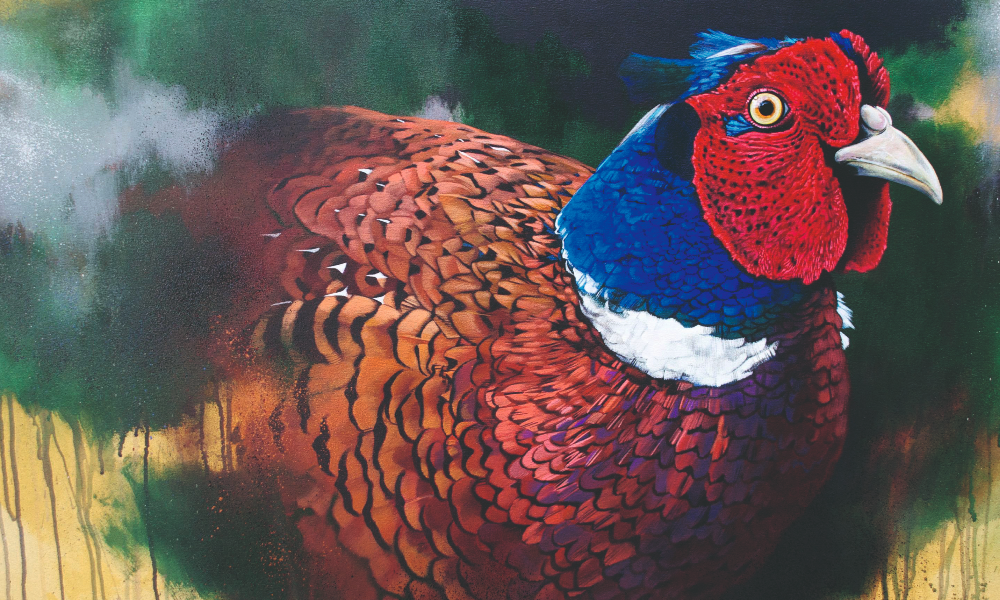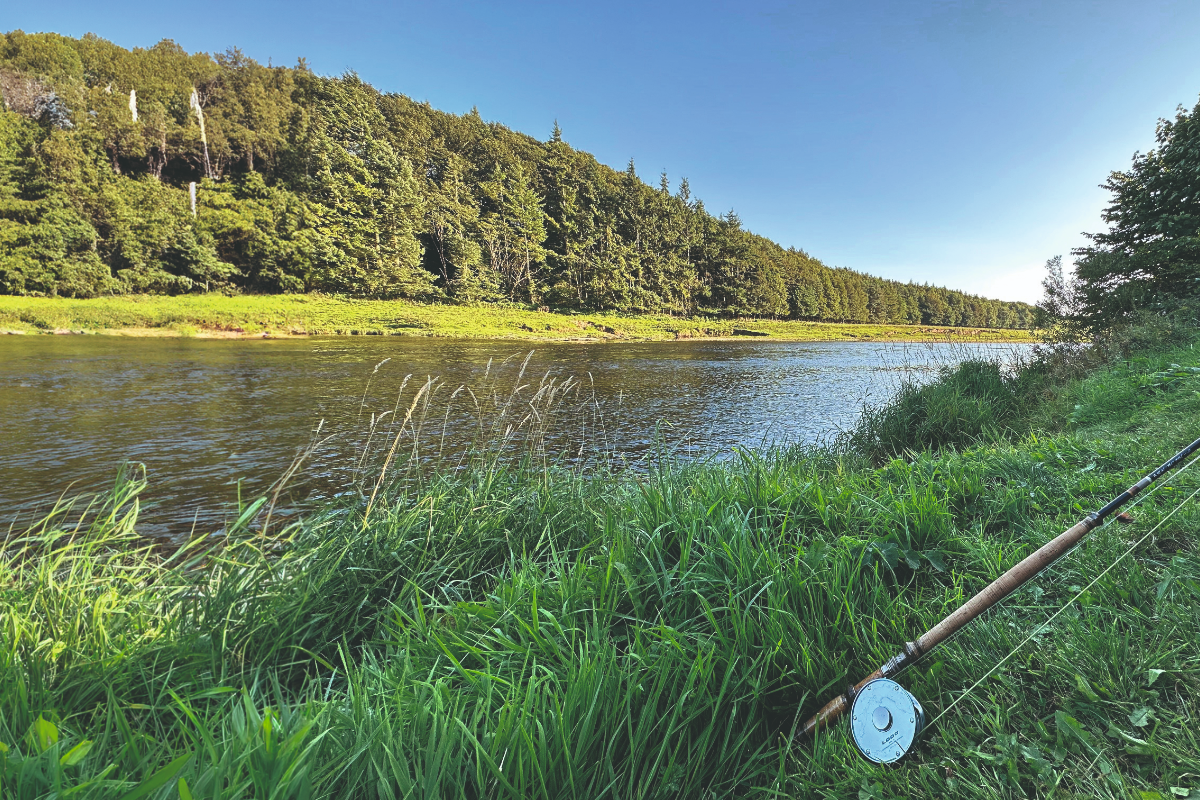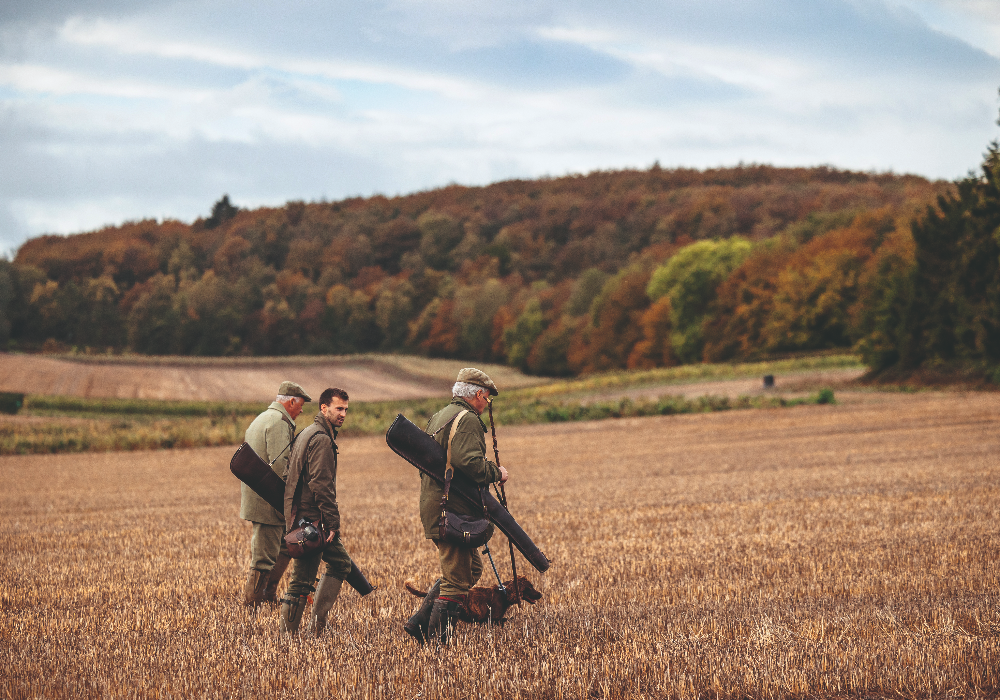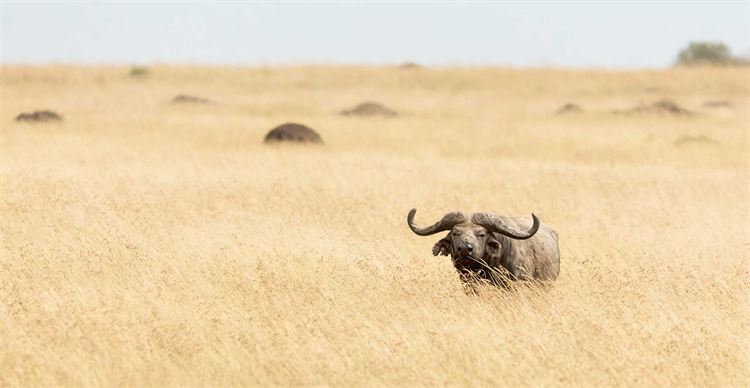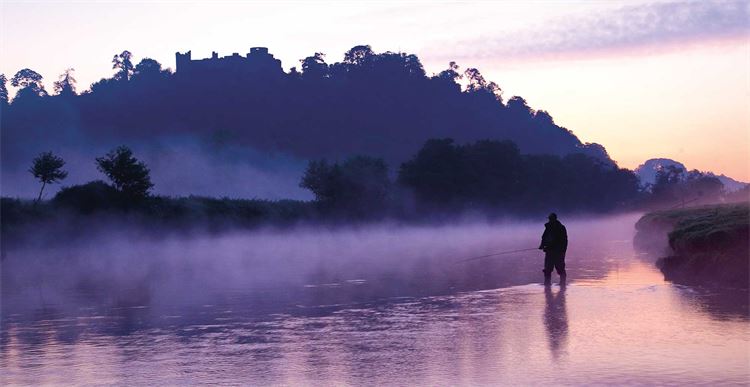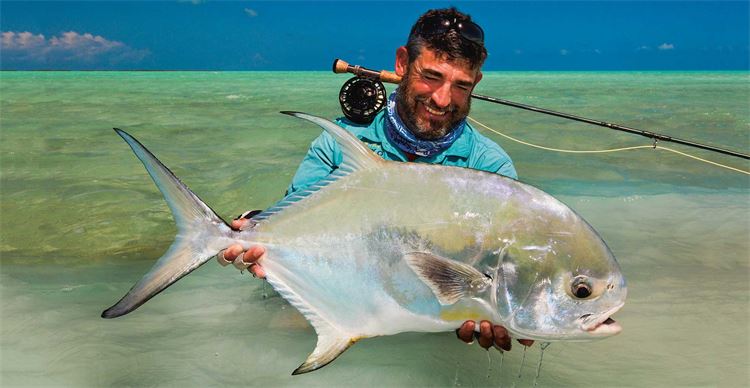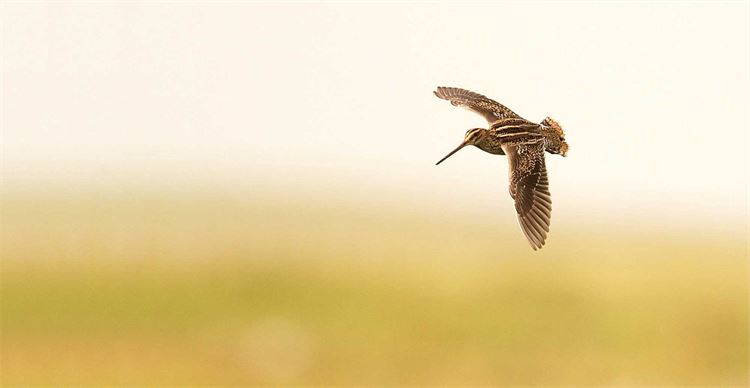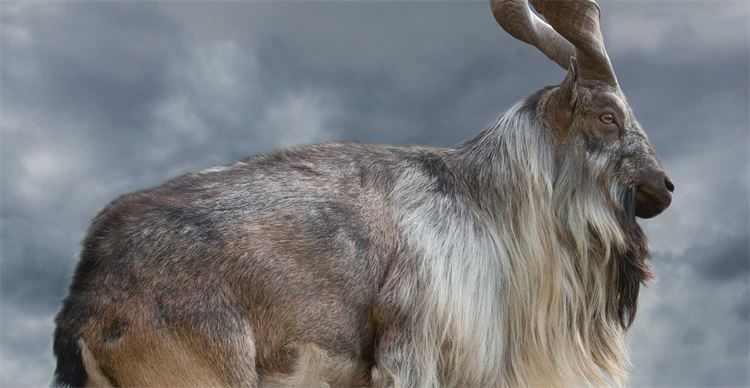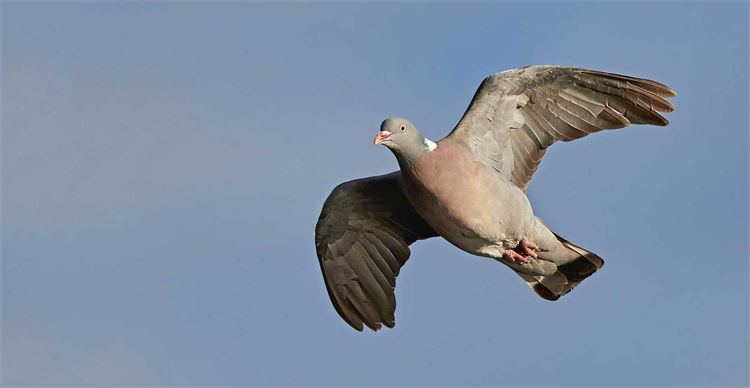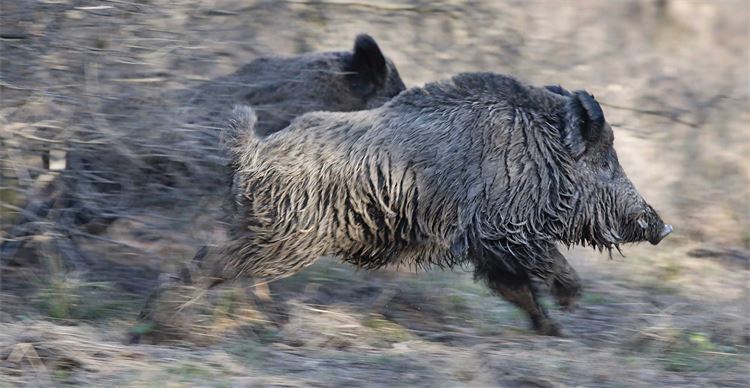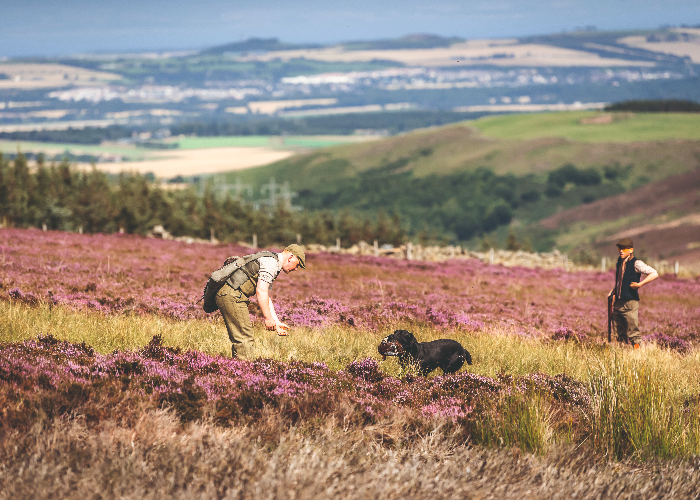The ultimate quarry species – Part 1
We seek nominations from serious sportsmen and women.
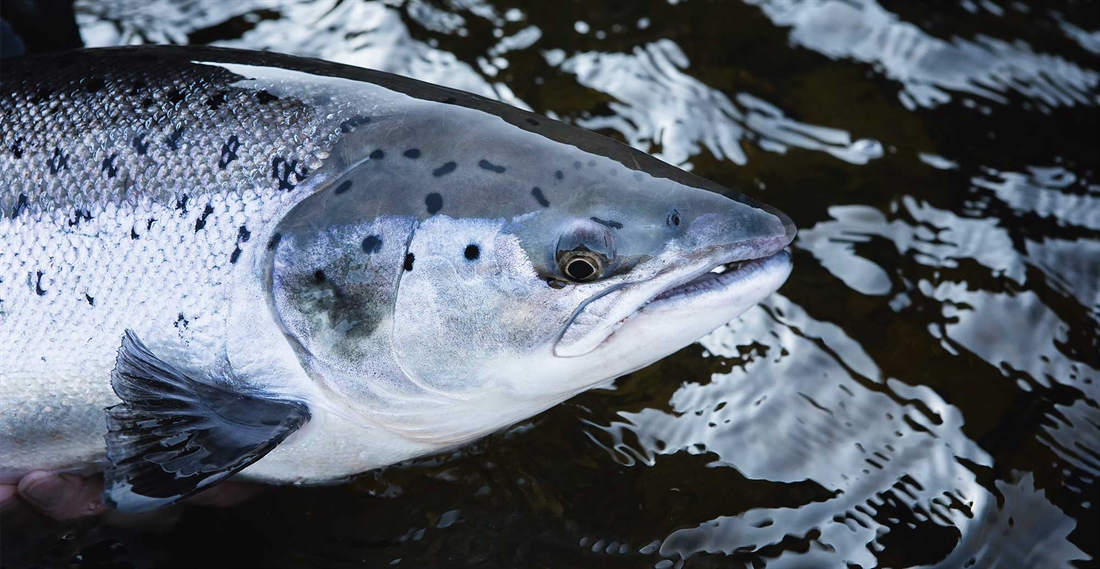
Atlantic Salmon – Salmo Salar
There are obviously times when Lady Luck plays a part in fishing, but generally speaking Atlantic salmon are incredibly difficult to catch! So many factors are at play on a day’s fishing, be it the weather conditions, colour/temperature of the water, the number of resident fish that hold other, fresher fish in the pools, type and size of fly, line weight… the list is fairly endless. It is the pursuit of these incredible fish that have lived through remarkable conditions, conditions that are so unfavourable towards their existence, that makes them the ultimate quarry species for me. A life without salmon fishing is not worth considering.
The ones that make it back to where they were born have survived herons, cormorants and cannibalistic brown trout in the rivers; sea lice, seals, dolphins and nets in the estuaries; and huge trawler nets in the open international waters. Those that come back then have to survive thousands of avid fishermen who until recently killed a large proportion of what they caught. Fortunately now almost every river practises a catch and release policy. In my opinion there are few better feelings than to hold a large salmon in the shallows after landing it, so it can take a breather before being released back into the wild.
I have been extremely lucky to fish some of the finest fly water in the world since I took up fishing at the age of five. I have landed fish in Norway, Iceland, Scotland and England, and I am sincerely hoping to add to that list in the future. The 44lb salmon I caught on the River Alta in Norway is possibly the highlight of my fishing career to date, but perhaps the eight fish I caught in a morning on the River Bowmont – a tiny tributary of the River Tweed – was my most memorable experience.
I had dodged out of a couple of lectures when at Edinburgh University after seeing the weather forecast, and headed down to the heart of the Cheviot Hills where the Bowmont flows. The river is no wider than 10 yards in places, but when in spate it is packed with fish towards the back end. I found one pool which yielded five within an hour, and added three more whilst picking my way downstream through the brambles and hedges and finding little spots worth a few casts. I particularly enjoy fishing new water that I have never seen and which requires me to work out where the fish might be.
My advice? Always listen to the ghillie! They know the river inside out, and whilst a discussion between you about what to use should happen, the modern day ghillie will know how to seek out those stubborn fish with the most varied tactics. A wonderful old ghillie from the River Tweed once told me to always fish a few yards past where I would normally stop, as you never know where the fish could be lying. It has proved to be very good advice indeed.
Cape buffalo – Syncerus caffer
Author / DR KEVIN ROBERTSON
It is with good reason that the various species of buffalo are by far Africa’s most popular dangerous game animals. Nothing else stirs the emotions, tests intestinal fortitude or causes tears to be shed like these formidable black bovines. This I write with conviction because four of my friends are no longer around thanks to ol’ Syncerus!
For the past three decades I have pursued for pleasure and reward these fascinating creatures and I have yet to meet the safari client who was satisfied with securing only a single trophy specimen. Such is their reputation and fascination that all who have, yearn to pursue buffalo again and again. No other African game animal elicits such a response to so many, and if this doesn’t demonstrate well the allure of buffalo hunting, nothing will!
Like any animal, buffalo are easily killed when a quality expanding-type bullet of adequate calibre is placed through the top of the heart. Be warned, however: Place the first shot poorly and the next dozen could have little effect! Throughout my career as a PH I carried a ‘big stick’ – a .505 Gibbs – and I was once proud of the fact that no buffalo ever required more than two shots, with the second one usually just for insurance. Then one day a lovely old bull decided otherwise. Granted, my client’s first shot was poorly placed, and this got the old boy’s adrenaline pumping. I fortunately stopped his charge with my fifth and the occasion’s eleventh shot, 10 of which were well placed! While embarrassing to the extreme the incident proved a point – at times buffalo can appear to be bulletproof.
Old, lone, battle-scarred bulls, with worn-smooth bosses and blunt or broken horn tips make the most desirable trophies simply because such bulls are the most challenging to locate and the hardest to hunt. No other animal uses the wind and cover like an old ‘Dugga Boy’ that knows it is being followed, and therein lies the appeal – if it’s a true ‘hunt’ you want, such a bull will give you one in spades.
A ‘proper’ buffalo hunt should be a true African wilderness experience – where having to dodge cheeky elephant cows in the ‘thick stuff’, long, hot, frustrating days tracking elusive old bulls, lions roaring at night, cosy campfires and hyenas making a nuisance of themselves around camp are all very much part of the experience.
My most memorable hunt was for just such a bull – a wonderful and battle-scarred 15-year-old fellow. In the end I followed him every day for a solid week. He knew early on we were tracking him and used every trick in the book to elude us. In the end either he got careless or I got lucky, and I suspect the latter, but a single 600gr bullet ended the affair – small indeed in comparison to the huge lump in my throat!
Sea trout – Salmo trutta
Author / STEFFAN JONES
To be an ultimate quarry species, in my eyes it has to be challenging yet obtainable. A wild species in, ideally, a wild environment. An amalgamation of these factors undoubtedly creates a drive to pursue the species in question in the first place, but also a yearning to pursue them again whenever the opportunity presents itself.
During the winter months snipe and woodcock tick these boxes for me, cherishing nothing greater than working my cockers on a rough shooting day with friends – each shot feels like a reward in itself, let alone collecting a bird for the game bag. However, from a piscatorial perspective, the sea trout reigns supreme – presenting the zenith of a fly angler’s quarry. They are enigmatic yet totally captivating, keeping you guessing and totally transfixed from night to night, season to season. They can be present one night, gone the next. As a rule, they do not feed, which adds to the challenge and also the intrigue. Once hooked they can spend more time out of the water than in, being masters at throwing the hook during such acrobatics. Their nocturnal habits and pursuit at night make for a surreal and unique experience. This added complexity, in my mind, highlights why they deserve the mantle of ‘the ultimate quarry species’.
My love and passion for sea trout provided impetus to share and make inroads for others to experience what I held in such high regard. As a result, I have no doubt that some of my most memorable sea trout experiences have been through the eyes of others. Seeing their reaction and their elation upon contacting a sea trout is as good, if not better, than hooking one yourself. You see something click as another gets besotted with the species. You also get to relive your earliest memories, reflecting on what got you hooked on the species in the first place.
There are a few considerations that will hold you in good stead when pursuing sea trout. First and foremost, find out when the sea trout are present as this can vary greatly from river to river. Unlike brown trout, for example, sea trout return from the sea and may only be present for a given window within the allotted season. As a rule, sea trout are more active and become easier to target/catch at night, especially if the river is low and clear. Make sure you visit the water in the daytime, before entering the water at night, for safety concerns alone.
Permit – Trachinotus falcatus
Author / MATT HARRIS
I’ve been lucky enough to fly fish all around the world. I’ve chased everything from the chub of my local River Cam to the sailfish of the Pacific ocean with a fly. When the editor asked me to choose, I was hard pressed to select a favourite, but after a great deal of deliberation, I managed to whittle it down to two. There are few thrills in life which compare with the moment when a really big Atlantic salmon nails your fly, especially if that fly is a Sunray Shadow riffle-hitched through the surface. But there is maybe – maybe – just one…
Permit are surely the most infuriating, the most capricious and, well, simply the most difficult fish to catch with a fly rod. The moment you actually dupe one of these impossible creatures to eat that concoction of fluff and steel absurdly masquerading as a shrimp or a crab is as exhilarating as it is rare. After many, many long hours, I’ve now caught 34 of these wonderful fish, and my heart still skips a beat every time I even see one.
Fishing for permit demands a singular approach. If you want to be successful, you’re going to have to learn to ignore all those big chrome-plated tarpon and lithe, mirror-scaled bonefish. Find a guide that shares your obsession and be prepared for any number of long, fishless days. You may well fly halfway around the world, spend an obscene amount of money and come back battered and bruised and utterly empty-handed. Know that catching your first one is the start of a lifetime of relentless heartbreak, but, yes, an occasional moment or two of absolute heart-stopping exhilaration.
Like big salmon, hooking a permit is only half the battle. Be ready for that moment when after 30 minutes, that fish suddenly swoops down to the bottom to rub out your fly in a heartbeat. Be ready for the moment when, without ceremony, that permit sheers your tippet around a lobster pot or a mangrove root. Be ready for that moment when a barracuda gets excited by your flyline rooster-tailing through the surface as your permit rockets across the flat, and for that barracuda to bite that same flyline clean in half. Be ready for that big hammerhead or lemon shark that comes and snaffles your prize when the fight is all but won. But also be ready for that moment when your guide reaches out and grabs your permit by the wrist of its big sickle tail. Believe me, that feeling really is worth all the heartache. Now comes the hard part… go and catch another one.
Common Snipe – Gallinago Gallinago
Author / JAMES HORNE
It’s a tough call between grouse and snipe. Both species fly in a fast and highly unpredictable fashion, jinking their way across the skyline, and very often represent extremely challenging targets. These birds also live in very particular habitats. Red grouse on British moorland evokes beautiful open imagery and snipe often reside in wetland that can be exceptionally picturesque. This scenery can change dramatically according to the weather conditions, with bright sunshine creating the perfect canvas for remarkable paintings and pictures, yet driving rain conjuring feelings of cold and dampness and dreams of log fires and a glass of whisky. However, snipe win the contest for me as their ability to gain remarkable height quickly and in a most haphazard course of flight make them at times astonishingly difficult to hit. When one is successful, this shot can often be the one you remember above all others.
Walking the bogs of the Isle of Muck in the Hebrides within earshot of the constant roar of the sea creates a lasting memory. This isolated, windswept land with little reminder of the works of man gives one the feeling of freedom which after all must be exactly how snipe feel. Gently walking through the bogs and marshes with your dog working closely in front of you is a mesmerising pastime and then it’s suddenly punctuated by the shrill rasping sound of a snipe dashing away. The usual strong wind from the Atlantic helps make this difficult target even more testing, but if you are lucky enough to get one the next challenge is to find it! However, the shoot to which I refer is very ably run by Toby Fitchner-Irvine who has the most remarkable collection of dogs that quickly locate the fallen quarry.
Shooting snipe is only one part of the process and they should not be shot unless you eat them. Beautifully cooked they make the most wonderful starter course.
One tip I was given by a gamekeeper when it comes to shooting snipe was, “if you can see it, you can shoot it!” Also, always take a full belt of cartridges as your shot to kill ratio can be considerably higher than it is for other gamebirds. I find my faithful side-by-side Purdey guns the most suitable for a long walk.
Markhor – Capra falconeri
Author / LADY KATIE PERCY
If it was my last day on earth, I’d be at Burncastle on a late-season, windy day with grouse flying like fighter jets. Nevertheless, the answer to the question for me is the markhor, a weird-looking, screw-horned goat that, until recently, was on the brink of extinction.
Markhor live at 12,000ft in the rugged mountains of Central Asia, from southern Russia to the Himalayas, through Afghanistan, Pakistan, Tajikistan, Turkmenistan and Uzbekistan. They are considered one of the most difficult animals in the world to hunt. Adept at hiding in the mountains, they have extremely keen eyes, are always on high alert, and are extraordinarily agile, being exceptional climbers and jumpers. Markhor have even been seen climbing slanted trees to forage and to evade predators such as snow leopards, lynx and wolves. To get anywhere near an old male you have to climb too, often up vertical cliff faces. To kill him you have to suffer, which is how it should be.
Another appealing feature of the markhor is his looks. Five-foot long corkscrew horns give him a mythical appearance, and with his huge beard and long, shaggy chest hair, he has an exaggerated masculinity; he is the manliest quadruped there is, and smells even worse than a domestic billy goat.
Hunting markhors is illegal. Even as recently as 2011, the markhor’s future looked bleak due to a combination of factors – locals hunting them for meat, the traditional medicine market’s pursuit of the ground-up horns, and poachers selling the trophies on the black market. And, as humans have encroached on the markhor’s domain, their habitat has been destroyed and domestic livestock have both competed for their food stocks and exposed them to their diseases.
However, the Pakistan Government issues 12 hunting permits every year for old markhors which are no longer good for breeding purposes. The proceeds are used to fund conservation efforts. These programmes have brought the animal back from extinction in Pakistan and Tajikistan. The fact that to hunt one is protecting the species makes it doubly appealing.
In British India, markhor were considered to be the most challenging game species because of the danger involved in stalking and pursuing them in high, mountainous terrain. “A man who is a good walker will never wish for finer sport than ibex or markhor shooting,” wrote the author Arthur Brinckman in his 1865 book, The Rifle in Cashmere.
I haven’t hunted markhor but I dream about finding a way to do it. The more I have learned about them the more obsessed I have become, to the point where now I would sell my grandmother to go and find one. It may come to that as shooting a markhor is a very expensive exercise. I have hunted ibex in the Pamir Mountains and it was the finest sport, and the most difficult. And yet, according to Brinckman and others, the markhor is even more ‘knowing’ than ibex. I spotted a markhor in the distance and was instantly captivated.
Generally, my advice for hunting in high mountains in the wintertime is to be well prepared. You must be fit, and even then it is difficult to breathe at that altitude after walking a mere quarter mile. Having the right kit is essential, especially gear for the coldest of conditions. Pack the best binoculars available, and most importantly, take Diamox, as altitude sickness is beyond horrendous.
Brinckman talks about the importance of doing the last part of the stalk very slowly, not walking on tiptoes or holding your breath etc., but my favourite piece of his advice is “Next to your rifles and ammunition, Worcestershire sauce is the most useful thing you can carry”. It’s actually a good suggestion when you’re reduced to eating a piece of tough old goat every day, though personally I’d substitute that for English mustard.
Woodpigeon – Columba palumbus
Author / RACHEL CARRIE
My ultimate quarry species might actually come as quite a surprise to anyone glancing over my hunting CV – I’ve clocked up some pretty epic hunting adventures. From black bears in British Columbia, red stags in the beautiful, heathered backdrop of the Highlands, and tahr and chamois in the New Zealand Alps, to wildfowl, driven boar and every species of deer up and down the UK. I’ve shot a lot of driven game in my time, too; I cut my teeth on some of the best grouse, pheasant and partridge shooting estates in the UK. And never will I forget my recent, bucket-list topping feat of a big, old ‘Dugga Boy’ in Africa… Why on earth then would my ultimate quarry species be the lowly old woodpigeon?!
It is a bird which is largely considered an agricultural pest, but for me the woodpigeon is one of the most underrated sporting quarry species we have in the UK. They are abundant, wild, wily and in my opinion one of the most difficult birds to shoot. Whether decoyed or shot as they flight into a roosting wood, they are no walk in the park, presenting almost every angle and shot in the book. But above all that, they make terrific eating!
Woodpigeon is my favourite bird to eat bar none; it’s a versatile meat and always available to me on our land at home. As well as cooking pigeons, I also really enjoy the fieldcraft involved in pigeon shooting; a day in the hide reminds me of making dens as a little girl, although this den is very strategically planned and there is great sport, tuna sandwiches and flasks of coffee in it!
I have so many fond pigeon shooting memories with my great friend and pigeon shooting guru Andy Crow. Aside from all of the advice on decoy patterns and hide building, the most valuable thing he has taught me over the years is not to focus on bag size – that’s not where the enjoyment comes from. I completely understand that for some it’s a job and farmers are keen to make as big a dent in the population as possible, however not every day has to be a red letter day because of a huge bag size. It’s something I see more and more of these days on social media and I don’t think it’s something we should be too eager to advocate.
Wild boar – Sus Scrofa
Author / FRANZ-ALBERECHT OETTINGEN – SPIELBERG
I guess many would think I’d opt for boar as my ultimate quarry species, but for me it is too hard to answer this question with just one answer. I garner equal enjoyment from hunting many other species for it is as much about tradition, the place, a moment in time and knowing the impact of what I am doing is promoting healthy wild populations of animals. With such spectacular diversity in Europe, my ultimate quarry moves with the seasons.
In spring and summer my attention is drawn to roebucks. In the autumn, during the rut, I focus on red stags, then fallow bucks, after which the winter season for driven boar begins. This keeps me well occupied. I am also fond of stalking mouflon ram in the snow and mountain hunting for old ibex and chamois, especially in Austria.
At home in Germany, we implement a scientific management plan which balances the population of wild animals with their habitat. It keeps the animals healthy and as a bi-product and success indicator, we harvest some nice trophies and carcass weights.
I also thoroughly enjoy bird shooting, although my opportunities are more limited than I’d like due to the time spent on big game.
When I started working with the producers of Wild Boar Fever in 2008, we didn’t realise how popular it would become. The success of the DVDs, the subscription channel and to see clips on YouTube of Wild Boar Fever scenes viewed into the millions was astonishing. However, it gave us a sense of responsibility. We have tried our hardest to pass on our ethical and traditional methods of hunting driven game to promote best practice in every way we can. We hope to have helped inspire the younger generation of hunters to enjoy driven hunting responsibly – and importantly with the right amount of practice.
As far as advice goes, on a driven hunt, never lose concentration. Always be aware of safety. Know your distances and limitations. Practice with intensity. Dry fire your rifle, work the action until you can do it with your eyes closed. Learn to identify male and female boar of all ages and sizes. Then repeat the same process 10 times. Once eyes, arms, hips and rifle are working as a team, you will be more relaxed and able to enjoy the experience more. There are many shooting cinemas across Europe open year-round. I cannot recommend highly enough spending time taking advantage of this before the season begins. Better make your mistakes there than in the field.
Related Articles
Get the latest news delivered direct to your door
Subscribe to Fieldsports Journal
Elevate your experience in the field with a subscription to Fieldsports Journal, the premium publication for passionate country sports enthusiasts. This bi-monthly journal delivers unparalleled coverage of game shooting, fishing and big game across the UK and beyond.
Each issue offers a stunning collection of in-depth features, expert opinions and world-class photography, all presented in a timeless yet contemporary design.
Save 10% on shop price when you subscribe, with a choice of packages that work for you. Choose from Print & Digital or Digital only with each journal delivered directly to your door or via the app every other month, plus access to past issues with the digital back issue library.



